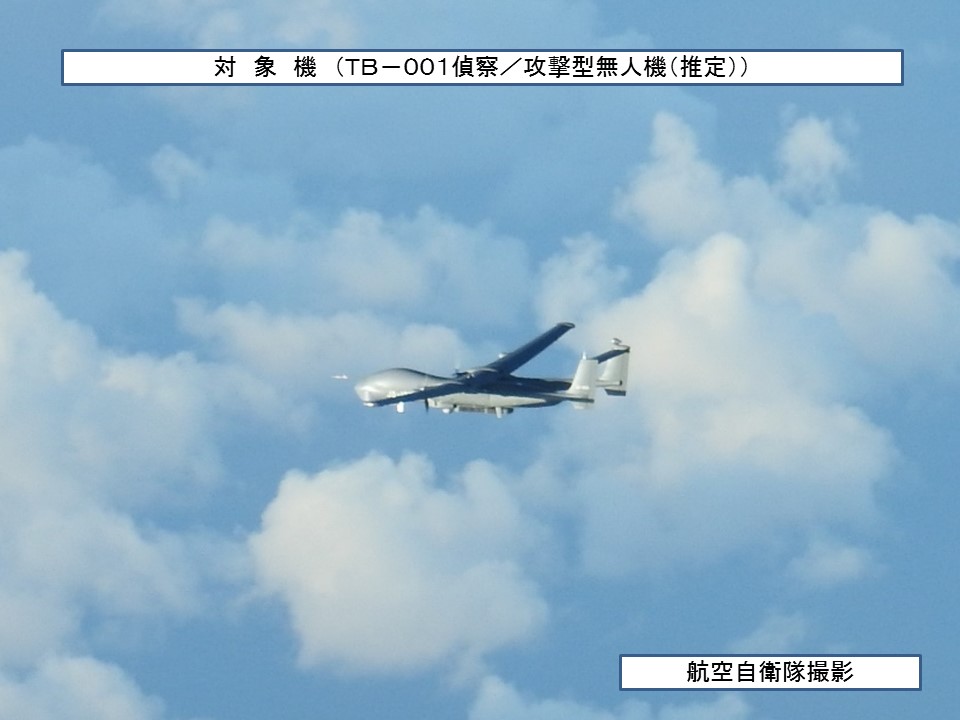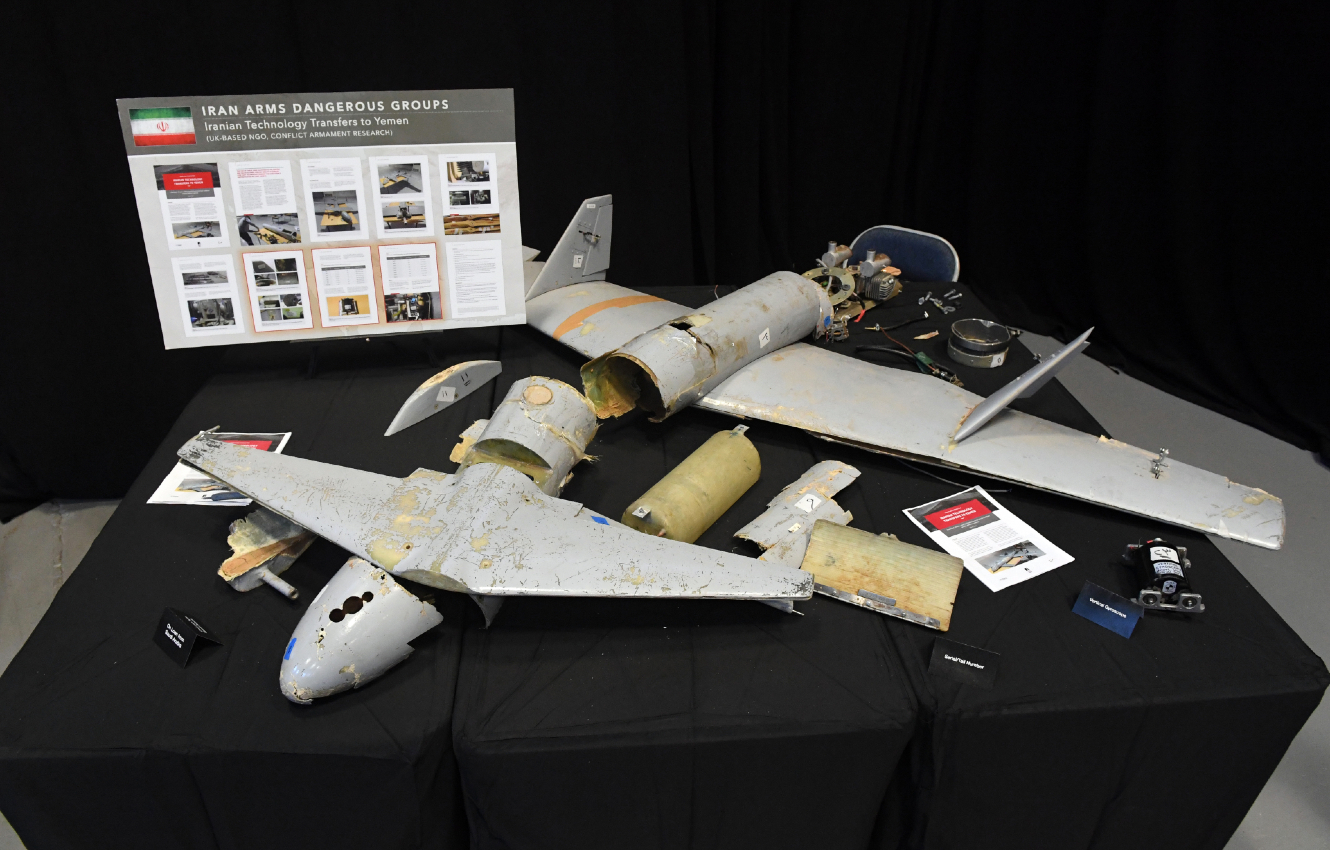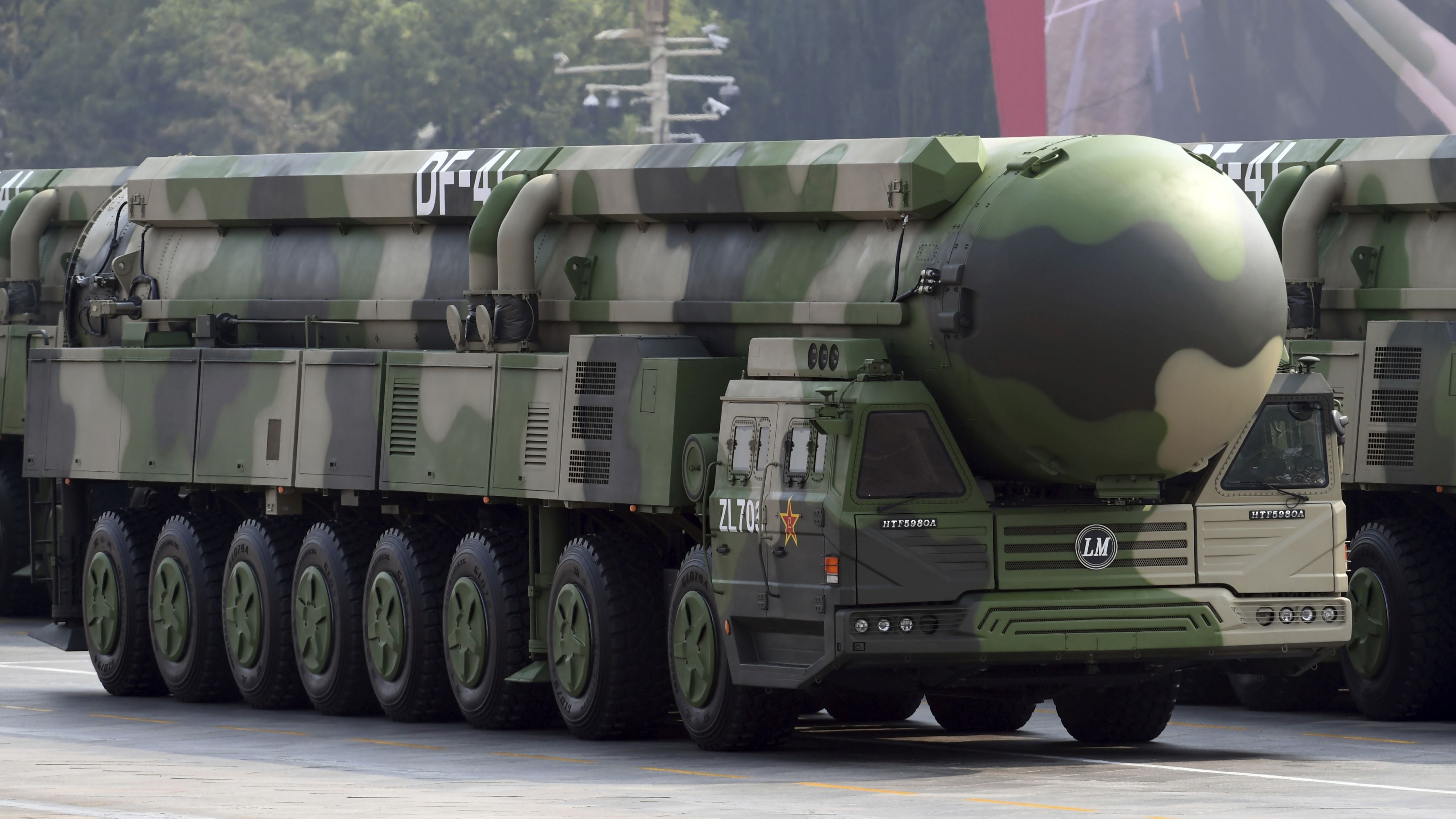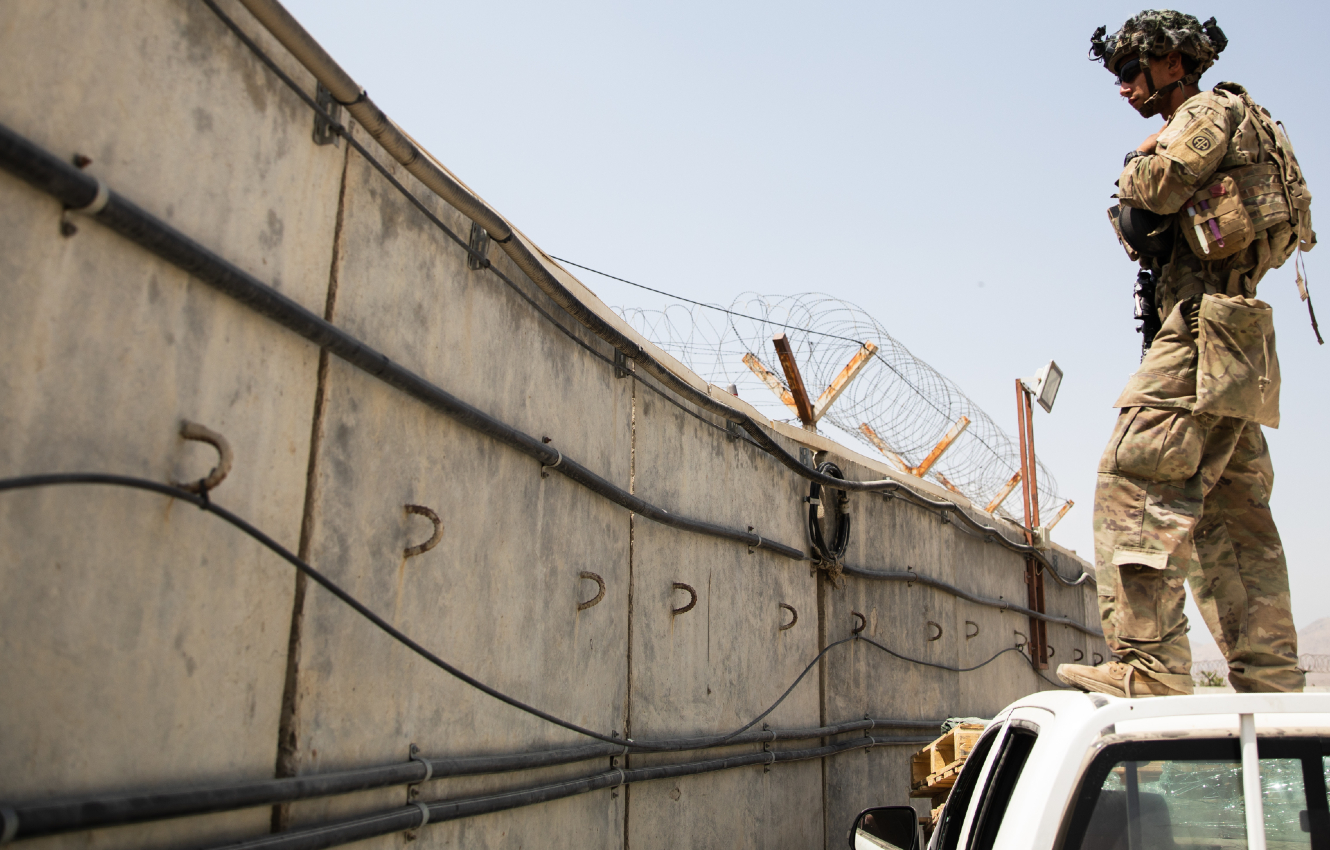Playing a little catch-up...HC
(485) 08-07-2021-to-08-13-2021__****THE****WINDS****of****WAR****
(486) 08-14-2021-to-08-20-2021__****THE****WINDS****of****WAR****
(487) 08-21-2021-to-08-27-2021__****THE****WINDS****of****WAR****
--------------------------------------------
Posted for fair use.....

 www.realcleardefense.com
www.realcleardefense.com
Does the United States Have Any Real Capability to Forward Deploy Nuclear Weapons Rapidly Outside of NATO Europe?
.
By Mark B. Schneider
August 27, 2021
At the end of the Cold War, in an extraordinarily bad example of making national security policy, the United States, as part of what is called the Presidential Nuclear Initiatives (PNIs), eliminated almost its entire arsenal of nonstrategic or tactical nuclear weapons. Dick Cheney, then Secretary of Defense, rejected this proposal. Cheney rejected it because of the near-unanimous opposition from senior Defense Department officials before it came to the Pentagon as a dictate from the George H.W. Bush White House.[1] Then-Secretary of Defense Cheney and General Colin Powell, then-Chairman of the Joint Chiefs of Staff, announced that the U.S. would eliminate 1,300 nuclear artillery shells and 850 Lance short-range ballistic missile nuclear warheads. Bush asked the Soviet Union (and later Yeltsin’s Russia) to eliminate its nuclear artillery, nuclear air defense missiles, and nuclear landmines. Both announced their own PNIs. Reportedly, the announced U.S. reductions involved about 5,000 nuclear weapons. President Bush also said that under “normal circumstances, our ships will not carry tactical nuclear weapons” and asked the Soviet Union to do the same. It agreed. Cheney and Powell said that 500 U.S. tactical nuclear weapons would be removed from submarines and surface ships and that 50% of them would be destroyed. General Powell also stated that all U.S. land-based naval nuclear depth bombs would be destroyed. In fact, actual U.S. reductions went well beyond those announced. In 2011, senior Obama administration NSC official Gary Samore stated that “The U.S. has a very small number -- only a few hundred tactical nuclear weapons….In contrast, the Russians have a much larger number -- probably a few thousand [tactical] nuclear weapons…”
There are now three hostile nuclear-armed states in the Asia Pacific area that have strategic and nonstrategic nuclear weapons – Russia, China and North Korea. All three have nuclear-capable nonstrategic missiles. Significantly, the United States has none. In April 2021, Major General Michael J. Lutton, Commander, Twentieth Air Force, Air Force Global Strike Command, stated that:
Specifically, Russia, China, and North Korea share five themes in foreign nuclear development and proliferation:
Russia violated its commitments, particularly with regard to nonstrategic nuclear weapons, under the Presidential Nuclear Initiatives. Russia also violated the INF Treaty by developing and deploying prohibited missiles. These Russian violations are, in part, responsible for the current massive Russian advantage in nonstrategic or tactical nuclear weapons.
Russia has consistently claimed it has reduced its nonstrategic nuclear forces from Cold War levels by 75%.[3] Alexei Arbatov, a Russian expert and former Vice Chairman of the Duma Defense Committee, and others (e. g., former Obama administration Assistant Secretary of Defense Graham Allison) have said that the late Cold War Soviet tactical nuclear arsenal was comprised of 22,000 tactical nuclear weapons. Some 22,000 nonstrategic nuclear weapons appear reasonably consistent with the announced peak Soviet nuclear stockpile in 1986 of 45,000. Using 22,000 as a baseline for calculation, the number of nonstrategic nuclear weapons in the Russian inventory after a 75% reduction would be over 5,000. In 2014, Pravda.ru reported, “Russia, according to conservative estimates, has 5,000 pieces of different classes of TNW [tactical nuclear weapons] - from Iskander warheads to torpedo, aerial and artillery warheads!.” Dr. Philip Karber, President of the Potomac Foundation, has stated that roughly half of Russia’s 5,000 tactical nuclear weapons have been modernized with new sub-kiloton nuclear warheads for air-defense, torpedoes and cruise missiles.” The estimated 2,000 and growing Russian nonstrategic nuclear weapons in the 2018 Nuclear Posture Review report appears to be a major underestimate. In February 2021, Vice Chairman of the Joint Chiefs of Staff General John Hyten confirmed reports of large-scale Russian deployment of low-yield nuclear weapons when he stated there were “thousands [of] low-yield … and tactical nuclear weapons that Russia is building and deploying…”
In March 2021, a German publication said it had obtained a German Defense Ministry document that stated Russia has about 6,375 nuclear warheads ready for use. This number appears to be substantially higher than the threat level assumed in the U.S. 2018 Nuclear Posture Review.
In December 2017, Bill Gertz reported, “Russia is aggressively building up its nuclear forces and is expected to deploy a total force of 8,000 warheads by 2026 along with modernizing deep underground bunkers, according to Pentagon officials. The 8,000 warheads will include both large strategic warheads and thousands of new low-yield and very low-yield warheads to circumvent arms treaty limits and support Moscow’s new doctrine of using nuclear arms early in any conflict.” In August 2019, then-Deputy Assistant Secretary of Defense for Nuclear Matters Rear Admiral (ret.) Peter Fanta confirmed the Gertz story, stating that “The Russians are going to 8,000 plus warheads.”[4] Again, it does not appear that such a threat level was assumed in the 2018 Nuclear Posture Review. In April 2021, noted Russian journalist Pavel Felgenhauer wrote, "Indeed, taking into account nonstrategic (tactical) nuclear weapons, which no one has ever verifiably counted, Russia may have more (maybe twice as many overall) than all the other official or unofficial nuclear powers taken together.” He may well be correct.
It is not only the number of Russian tactical nuclear weapons but the diversity of types that is of concern.[5] According to a 2017 Defense Intelligence Agency report on Russia Military Power, Russian nonstrategic nuclear weapons "…include air-to-surface missiles, short-range ballistic missiles, gravity bombs, and depth charges for medium-range bombers, tactical bombers, and naval aviation, as well as anti-ship, anti-submarine, and anti-aircraft missiles, and torpedoes for surface ships and submarines. There may also be warheads remaining for surface-to-air and other aerospace defense missile systems.” A similar but slightly longer list appears in the 2018 Nuclear Posture Review report. Russia has clearly maintained the diverse Soviet tactical nuclear arsenal, albeit at reduced but still very large numbers. Since the 2018 Nuclear Posture Review, Russia has revealed the development and deployment of a wide array of strategic and nonstrategic nuclear-capable hypersonic missiles. A popular Moscow weekly summed up the situation, “The Russian tactical nuclear arsenal dominates Europe…”
The 2018 U.S. Nuclear Posture Review report stated that "China, too, is modernizing and expanding its already considerable nuclear forces….China's military modernization has resulted in an expanded nuclear force, with little to no transparency into its intentions.” China is now engaged in a massive expansion of its strategic nuclear forces. It very much looks like China is engaged in a “Sprint To Nuclear Superiority.” The 350-400 DF-41 large ICBM silos now under construction have the potential to carry 3,500-4,000 nuclear warheads. This is only a part of Chinese strategic modernization.
Continued.....
(485) 08-07-2021-to-08-13-2021__****THE****WINDS****of****WAR****
(486) 08-14-2021-to-08-20-2021__****THE****WINDS****of****WAR****
(487) 08-21-2021-to-08-27-2021__****THE****WINDS****of****WAR****
--------------------------------------------
Posted for fair use.....

Does the United States Have Any Real Capability to Forward Deploy Nuclear Weapons Rapidly Outside of NATO Europe?
At the end of the Cold War, in an extraordinarily bad example of making national security policy, the United States, as part of what is called the Presidential Nuclear Initiatives (PNIs), eliminated a
Does the United States Have Any Real Capability to Forward Deploy Nuclear Weapons Rapidly Outside of NATO Europe?
.
By Mark B. Schneider
August 27, 2021
At the end of the Cold War, in an extraordinarily bad example of making national security policy, the United States, as part of what is called the Presidential Nuclear Initiatives (PNIs), eliminated almost its entire arsenal of nonstrategic or tactical nuclear weapons. Dick Cheney, then Secretary of Defense, rejected this proposal. Cheney rejected it because of the near-unanimous opposition from senior Defense Department officials before it came to the Pentagon as a dictate from the George H.W. Bush White House.[1] Then-Secretary of Defense Cheney and General Colin Powell, then-Chairman of the Joint Chiefs of Staff, announced that the U.S. would eliminate 1,300 nuclear artillery shells and 850 Lance short-range ballistic missile nuclear warheads. Bush asked the Soviet Union (and later Yeltsin’s Russia) to eliminate its nuclear artillery, nuclear air defense missiles, and nuclear landmines. Both announced their own PNIs. Reportedly, the announced U.S. reductions involved about 5,000 nuclear weapons. President Bush also said that under “normal circumstances, our ships will not carry tactical nuclear weapons” and asked the Soviet Union to do the same. It agreed. Cheney and Powell said that 500 U.S. tactical nuclear weapons would be removed from submarines and surface ships and that 50% of them would be destroyed. General Powell also stated that all U.S. land-based naval nuclear depth bombs would be destroyed. In fact, actual U.S. reductions went well beyond those announced. In 2011, senior Obama administration NSC official Gary Samore stated that “The U.S. has a very small number -- only a few hundred tactical nuclear weapons….In contrast, the Russians have a much larger number -- probably a few thousand [tactical] nuclear weapons…”
There are now three hostile nuclear-armed states in the Asia Pacific area that have strategic and nonstrategic nuclear weapons – Russia, China and North Korea. All three have nuclear-capable nonstrategic missiles. Significantly, the United States has none. In April 2021, Major General Michael J. Lutton, Commander, Twentieth Air Force, Air Force Global Strike Command, stated that:
Specifically, Russia, China, and North Korea share five themes in foreign nuclear development and proliferation:
- Increasing numbers or capabilities of weapons in existing programs;
- Enduring security threats to weapons and material;
- Developing delivery systems with increased capabilities;
- Developing nuclear weapons with smaller yields, improved precision, and increased range for military or coercive use on the battlefield;
- Developing new nuclear weapons without conducting large-scale nuclear tests.
Russia violated its commitments, particularly with regard to nonstrategic nuclear weapons, under the Presidential Nuclear Initiatives. Russia also violated the INF Treaty by developing and deploying prohibited missiles. These Russian violations are, in part, responsible for the current massive Russian advantage in nonstrategic or tactical nuclear weapons.
Russia has consistently claimed it has reduced its nonstrategic nuclear forces from Cold War levels by 75%.[3] Alexei Arbatov, a Russian expert and former Vice Chairman of the Duma Defense Committee, and others (e. g., former Obama administration Assistant Secretary of Defense Graham Allison) have said that the late Cold War Soviet tactical nuclear arsenal was comprised of 22,000 tactical nuclear weapons. Some 22,000 nonstrategic nuclear weapons appear reasonably consistent with the announced peak Soviet nuclear stockpile in 1986 of 45,000. Using 22,000 as a baseline for calculation, the number of nonstrategic nuclear weapons in the Russian inventory after a 75% reduction would be over 5,000. In 2014, Pravda.ru reported, “Russia, according to conservative estimates, has 5,000 pieces of different classes of TNW [tactical nuclear weapons] - from Iskander warheads to torpedo, aerial and artillery warheads!.” Dr. Philip Karber, President of the Potomac Foundation, has stated that roughly half of Russia’s 5,000 tactical nuclear weapons have been modernized with new sub-kiloton nuclear warheads for air-defense, torpedoes and cruise missiles.” The estimated 2,000 and growing Russian nonstrategic nuclear weapons in the 2018 Nuclear Posture Review report appears to be a major underestimate. In February 2021, Vice Chairman of the Joint Chiefs of Staff General John Hyten confirmed reports of large-scale Russian deployment of low-yield nuclear weapons when he stated there were “thousands [of] low-yield … and tactical nuclear weapons that Russia is building and deploying…”
In March 2021, a German publication said it had obtained a German Defense Ministry document that stated Russia has about 6,375 nuclear warheads ready for use. This number appears to be substantially higher than the threat level assumed in the U.S. 2018 Nuclear Posture Review.
In December 2017, Bill Gertz reported, “Russia is aggressively building up its nuclear forces and is expected to deploy a total force of 8,000 warheads by 2026 along with modernizing deep underground bunkers, according to Pentagon officials. The 8,000 warheads will include both large strategic warheads and thousands of new low-yield and very low-yield warheads to circumvent arms treaty limits and support Moscow’s new doctrine of using nuclear arms early in any conflict.” In August 2019, then-Deputy Assistant Secretary of Defense for Nuclear Matters Rear Admiral (ret.) Peter Fanta confirmed the Gertz story, stating that “The Russians are going to 8,000 plus warheads.”[4] Again, it does not appear that such a threat level was assumed in the 2018 Nuclear Posture Review. In April 2021, noted Russian journalist Pavel Felgenhauer wrote, "Indeed, taking into account nonstrategic (tactical) nuclear weapons, which no one has ever verifiably counted, Russia may have more (maybe twice as many overall) than all the other official or unofficial nuclear powers taken together.” He may well be correct.
It is not only the number of Russian tactical nuclear weapons but the diversity of types that is of concern.[5] According to a 2017 Defense Intelligence Agency report on Russia Military Power, Russian nonstrategic nuclear weapons "…include air-to-surface missiles, short-range ballistic missiles, gravity bombs, and depth charges for medium-range bombers, tactical bombers, and naval aviation, as well as anti-ship, anti-submarine, and anti-aircraft missiles, and torpedoes for surface ships and submarines. There may also be warheads remaining for surface-to-air and other aerospace defense missile systems.” A similar but slightly longer list appears in the 2018 Nuclear Posture Review report. Russia has clearly maintained the diverse Soviet tactical nuclear arsenal, albeit at reduced but still very large numbers. Since the 2018 Nuclear Posture Review, Russia has revealed the development and deployment of a wide array of strategic and nonstrategic nuclear-capable hypersonic missiles. A popular Moscow weekly summed up the situation, “The Russian tactical nuclear arsenal dominates Europe…”
The 2018 U.S. Nuclear Posture Review report stated that "China, too, is modernizing and expanding its already considerable nuclear forces….China's military modernization has resulted in an expanded nuclear force, with little to no transparency into its intentions.” China is now engaged in a massive expansion of its strategic nuclear forces. It very much looks like China is engaged in a “Sprint To Nuclear Superiority.” The 350-400 DF-41 large ICBM silos now under construction have the potential to carry 3,500-4,000 nuclear warheads. This is only a part of Chinese strategic modernization.
Continued.....















